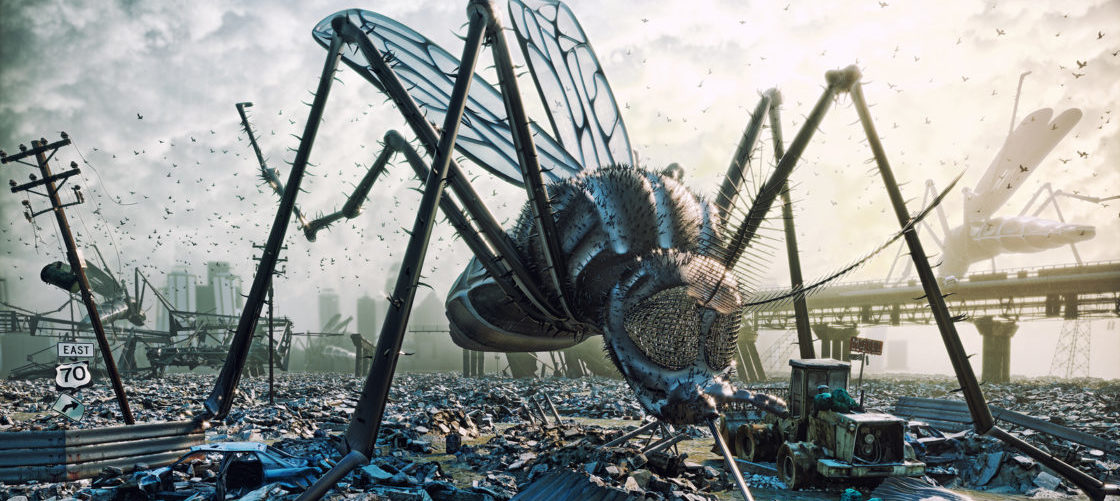If the last few years have taught us anything, it’s that we can’t control the forces of nature. And the situation is likely to get worse. Since 2000, EM-DAT (the International Disasters Database) recorded an average of 341 climate-related disasters per year. That’s up 44 percent from the 1994-2000 average! While attack by giant insects as of now remains the domain of terrible 1950s science fiction movies, hurricanes, tsunamis, flooding, fires, earthquakes, blizzards and other natural disasters are undeniably on the rise.
But even with all of those catastrophic events in the rearview mirror, we still call bullshit on Money Stress.
Why? Because you shouldn’t have to live in fear of an emergency. Don’t wonder whether your income, resources and community will support you when something unexpected happens. You can’t control the weather, but you can control your response.
The good news is that as you work toward Financial Freedom, you’ll Protect Yourself in many different ways including being prepared for a natural disaster. That’s not to say a sudden natural disaster won’t affect off your life. Even a minor snowstorm can be a big deal! But you won’t have to worry quite as much about recovery.
Preparing for the Worst
As noted, the best way to ease anxiety is preparation. Consider these actions to get you and your family prepared for a natural disaster.
Purchase the right protections
A search of the term “emergency” on GoFundMe returns 22,391 results for parents, children, friends and families asking for help for their loved ones. And that’s hardly comprehensive. You must make sure you have the right insurance policies in place to be prepared for a natural disaster. A basic package might include health, auto, renter’s or homeowner’s and income protection insurance. But if you’re unsure about the plans you need, speak with an advisor or your financial coach. Even if you’re not in a high-risk physical environment, don’t skip this step.
Create an Emergency Financial First Aid Kit.
The best way to understand the resources you have available to you, from insurance protections to community funds, is to create a document detailing everything you need should disaster strike. In the United States, FEMA encourages us to complete Operation Hope’s Emergency Financial First Aid Kit to keep track of important documents like insurance policy information. This way you have clear financial records to help maintain stability as you recover. Even if you’d rather create your own master document, the kit offers a great blueprint.
Set aside a portion of your income for emergencies.
Building your Security Buffer will help you avoid incurring credit card debt should a major, unexpected (and costly) emergency arise. Figure out how much income you can afford to set aside for emergencies (e.g., $200 a month) based on your salary and other essential needs, and set up automatic deductions. According to CNBC, 57 million Americans lack an emergency fund. That means something as minor as tires blowing out on the highway can derail the best laid-financial plans.
Reconsider your living conditions.
While it isn’t always possible to control your living situation, you may want to think twice before purchasing a home on a beach, flood zone or in an area that was previously wetlands.
Know what you might face.
You probably have a good idea about what kinds of natural disasters you may face. But this list provided by The Red Cross offers detailed insights on your likelihood of experiencing a blizzard, drought or tsunami at your location. Knowing what can happen helps you make difficult decisions. Whether that’s investing in a stronger home-protection policy or moving out of the area altogether.
Bracing for the Unknown
Even if you do everything possible to organize your documents, save for emergencies and Protect Yourself, you may still feel caught off-guard when something happens. But doing little to prepare—or nothing at all—only makes matters worse. And you’ll feel more stress in the long-term.
The best way to move toward real Financial Freedom is to protect yourself. Whether disaster strikes tomorrow or 10 years from now, you’ll be glad you took the steps today to secure your future.
image credit: Bigstock/viczast
Dr. Tony is the co-founder of MindShift.money and the best-selling author of three books on personal and business finances. Having achieved Financial Freedom at 27, Dr. Tony believes that through Financially Fit Bootcamp and Cash Flow Cure everyone can get there. He has made it his life’s mission to help others live a life where their money works for them—not the other way around.
